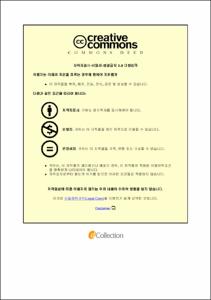Ulsan Univ. Repository
Thesis
General Graduate School
Convergence Technology Engineering of Heavy Industry
1. Theses(Master)
FCA 탄소강 용접금속의 고온균열에 대한 Ni의 영향
- Abstract
- 최근, 극지방의 석유자원개발 증가와 극지방의 수송효율이 증가하여 선박용 강재는 보다 높은 저온인성이 요구되고 있다. 선박 건조 시 용접은 필수적으로 수반되는데, 용접금속은 합금원소를 첨가하여 인성을 향상시키는 방법을 채택하고 있다. 그 중 Ni은 용접금속의 저온인성을 증가시키는 합금원소로 알려져 있다. 하지만, 저온인성 증가와 동시에 용접금속의 고온균열을 발생시키는 단점이 있다. 탄소강에서 그 영향은 확실히 규명되어 있지 않다. 본 연구의 목적은 저 탄소 강 FCA용접 금속의 응고 균열에 대한 Ni의 영향을 고찰하는 것이다. Ni 함량이 다른 0 ~ 3.5 wt.%의 4종류의 Flux-cored arc welding(FCAW) 용접봉을 준비하여 탄소강에 용접하였다. 모든 용접봉에서 용접금속 중심부에 종 방향으로 응고 균열이 발견되었지만 고온균열 감수성은 Ni 함량에 따라 다른 결과를 보였다. 실험 결과, Ni 함량이 2.5 wt. %까지 증가 할 때 전체 균열 길이 및 최대 균열 길이는 감소하지만, 3.5 wt.% Ni 용접봉은 응고 균열에 대해 높은 감수성을 나타냈다. 열역학적 시뮬레이션을 통해 고상과 액상이 공존하는 고액공존구간(Mushy zone)의 상 분율을 계산한 결과Ni 함량이 0 ~2.5 wt. %로 증가 할 때 응고 모드가 초정 δ-Ferrite로 응고하는 F모드에서 δ-Ferrite와 오스테나이트가 함께 응고하는 FA 모드로 변화함을 알 수 있었다. FA응고모드 변화로 인해 미세한 결정립과 낮은 계면 에너지로 인해 응고균열감수성이 줄어든 것으로 보인다. 반면, Ni 3.5 wt. %의 용접 금속은 초정 오스테나이트로 응고하는 A 모드에 의해 응고되었다. 오스테나이트는S에 대한 고용도가 비교적 낮기 때문에 응고 최종단계에서 S의 편석을 일으키며 그 결과 2.5 wt.%까지 감소한 고온균열감수성이 다시 증가하였다. 스테인리스강의 FA모드가 고온균열감수성에 미치는 이점이 탄소강에서도 동일하게 적용되는 여부에 대해 추가적인 연구가 필요하다.|In recent years, the increase in the development of petroleum resources and the increase in transport efficiency in polar regions have led to the demand for higher strength and low temperature toughness of steels for vessel. Weld metals are made by adding alloying elements to improve toughness. Among them, Nickel (Ni) is known to increase the low temperature toughness. However, it is known as an element promoting solidification cracking of weld metal, but the influence of carbon steel is not clearly defined. The purpose of this study is to evaluate the effect of Ni content on solidification cracking in the weld metal of low carbon steel. Four types of flux-cored arc welding (FCAW) wires with different Ni contents (0 to 3.5 wt.%) were prepared and subsequently welded on plate. Although longitudinal solidification cracks were detected for every wire, it was found that the cracking susceptibility depends on the Ni content. That No., the total crack length as well as maximum crack length decreased with an increase in Ni content up to 2.5 wt.%, But the weld with 3.5 wt.% Ni resulted in high susceptibility on solidification cracking. The thermodynamic calculation showed that solidification mode was changed from F mode to FA mode, when the Ni content increased from 0 to 2.5 wt.%. This result indicated that the finer columnar grains and low interfacial energy could be obtained by increasing Ni content in this range, which was helpful to reduce the susceptibility to solidification cracking. On the other hand, the weld metal with 3.5 wt.% Ni was solidified by A mode, where the primary phase was changed from -ferrite to austenite. Since the austenite had a relatively low solubility for Sulphur (S), the S segregation was readily produced during solidification and the cracking susceptibility increased in this region. Compositional analysis result also confirmed the S segregation near the crack tip region in the weld metal with 3.5 wt.% Ni. These results reveal that the maximum allowable Ni content is 2.5 wt.% to prevent the solidification cracking in the low carbon steel weld metal.
- Issued Date
- 2017
- Awarded Date
- 2018-02
- Type
- Dissertation
- Keyword
- 응고균열; Flux-Cored Arc Welding; Ni
- Alternative Author(s)
- KIM BISON
- Affiliation
- 울산대학교
- Department
- 일반대학원 중공업융합기술공학과
- Advisor
- 이정구
- Degree
- Master
- Publisher
- 울산대학교 일반대학원 중공업융합기술공학과
- Language
- kor
- Rights
- 울산대학교 논문은 저작권에 의해 보호받습니다.
- Appears in Collections:
- Convergence Technology Engineering of Heavy Industry > 1. Theses(Master)
- 파일 목록
-
-
Download
 200000008463.pdf
기타 데이터 / 4.41 MB / Adobe PDF
200000008463.pdf
기타 데이터 / 4.41 MB / Adobe PDF
-
Items in Repository are protected by copyright, with all rights reserved, unless otherwise indicated.